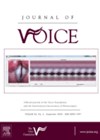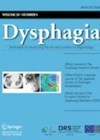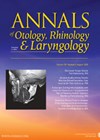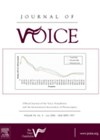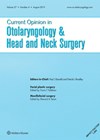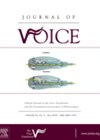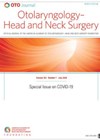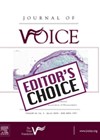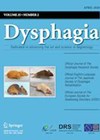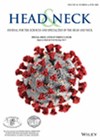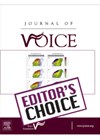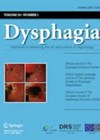
Journal Reviews
Multiple surgeries for RRP – does a greater number of operations result in a worse voice outcome?
Recurrent respiratory papillomatosis (RRP) of the larynx remains a challenging condition to treat, with a number of affected patients requiring multiple operations to remove recurrent disease over the course of their lifetime. At the most severe end of the spectrum,...
Dysphagia following intubation during the COVID-19 pandemic
Dysphagia is a known sequela of mechanical ventilation and intubation. About a third of patients discharged from hospital after acute respiratory distress syndrome present with dysphagia. The authors of this review have considered the implications for patients intubated due to...
Laryngopharyngeal reflux - would mucolytics help?
With laryngopharyngeal reflux (LPR) being such a common presenting complaint to ENT clinics, who would not want to have more, effective treatment options for patients suffering with this annoying condition? In their small randomised, controlled trial, Chae et al put...
Speech analysis via mobile phone – is there an app for that?
Experienced ENT surgeons will often be able to discern the likelihood of significant laryngeal pathology in a patient referred with dysphonia by the sound of their voice during the initial history-taking phase of a consultation. With the move earlier in...
Enhanced recovery following surgery for head and neck cancer – the current evidence
Enhanced recovery after surgery (ERAS) programmes are now well established in many surgical specialities as a means of reducing postoperative complications and length of stay in hospital. Whilst many head and neck teams have interventions used to aid postoperative recovery,...
Patient positioning for transnasal flexible laryngoscopy
The position of a patient’s head during flexible nasendoscopy to visualise the larynx does not usually require much consideration – adequate views are almost always obtained with a patient sitting in a neutral position. Occasionally however, there will be patients...
Laryngeal evaluation during COVID-19 using transcervical ultrasonography
In light of the COVID-19 pandemic, the authors highlight their protocol of transcutaneous laryngeal ultrasonography as an alternative to flexible fibreoptic laryngoscopy when appropriate. This is to reduce the risk of aerosolisation posed by laryngoscopy. Ultrasonography is a rapid, non-invasive...
Vocal fold motion impairment following intubation – how likely is it to recover?
Ed’s Choice reviews a timely paper investigating prolonged intubation on vocal fold motion. The current scientific literature is dominated by studies examining COVID-19 and its widespread effects on health and healthcare delivery but will be old news by the time...
Telepractice for the delivery of paediatric feeding services
During the current COVID-19 pandemic, telepractice is being heralded as the safest service delivery mode for the majority of outpatient consultations. Patients are reviewed by their healthcare specialist through video consultations, thus avoiding the need for patients to leave their...
Patient reported outcomes following total laryngectomy using the Swallowing Outcomes After Laryngectomy (SOAL) questionnaire
Following a total laryngectomy, alterations in the pharyngeal musculature and changes in the pharyngo-oesophageal segment due to reconstruction, results in altered bolus transit. Swallowing dysfunction after total laryngectomy for head and neck squamous cell carcinoma can vary from 10%-90%. There...
Early injection laryngoplasty for iatrogenic vocal fold movement impairment – a safe and effective treatment
This Ed’s Choice examines the role of early injection laryngoplasty on swallowing dysfunction and is one of a few studies available in the literature. Research on early injection laryngoplasty has been predominately focused on voice and reducing the risk of...
Increasing tongue strength to reduce dysphagia: what is the potential benefit of a device driven exercise?
Weakness in tongue muscle strength and laryngeal elevation is known to have an adverse impact on swallowing function. Various swallowing exercises are often recommended to improve function of these important structures with the goal of preventing aspiration and improving swallow...

